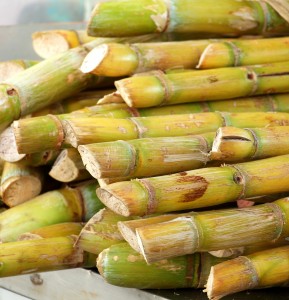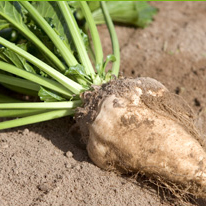 From sugar cane
From sugar cane
Cane sugar is initially extracted in sugar mills in the areas where it is grown (tropical and semi-tropical regions) as soon as it is harvested. Sugar cane is similar to bamboo and has a very tough shiny outer coating which protects the sweet, woody inner fibre.
Process
- Sugar cane is cut into small pieces and shredded
- It is crushed between heavy rollers
- This is sprayed with hot water. Lime is added to clean the resulting juice
- The brown liquid is filtered to produce a thin juice
- The juice is boiled under vacuum to form a thick syrup
- The crystals (raw sugar) and syrup (molasses) are separated in a centrifuge. Brown raw sugar crystals are produced
- The raw sugar is exported around the world for local refining
Refining removes impurities and traces of molasses to produce pure white sugar crystals. The processes used are very similar to those used in the raw sugar cane mill.
 From sugar beet
From sugar beet
The extraction & production of white sugar from beet takes place on the same factory site. A sample from each delivery of sugar beet entering the factories in Britain is tested to find out how much of the beet is made up of sugar and the farmer is paid accordingly.
Process
- The sugar beet is washed and sliced into small pieces known as cossettes
- The cossettes are sprayed with hot water. Lime and carbon dioxide are added to clean the resulting juice
- The brown liquid is filtered
- The juice is boiled under vacuum to produce a thick syrup. Crystals start to appear. Tiny sugar crystals called ‘seeds’ are added to encourage crystallization
- Pure white sugar crystals are separated from the syrup in a centrifuge


